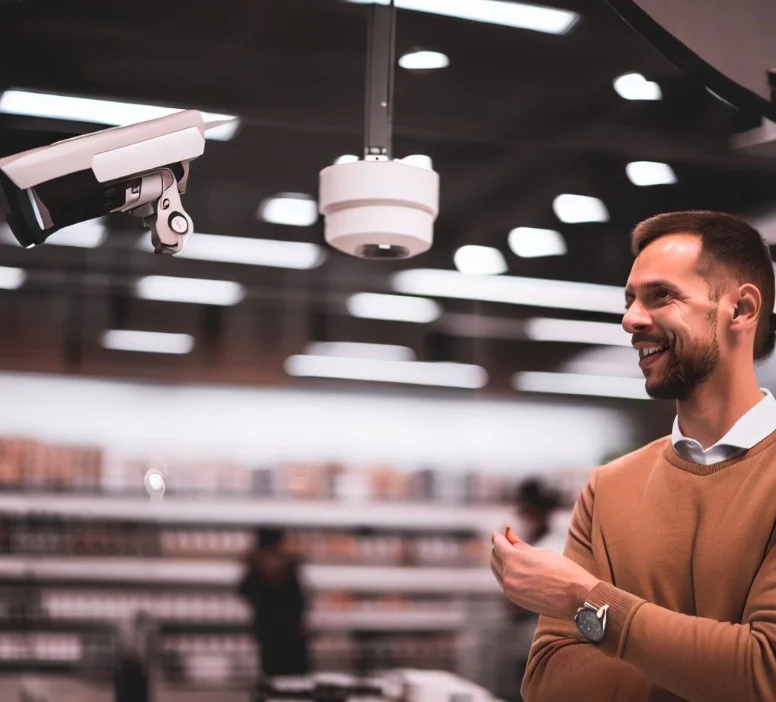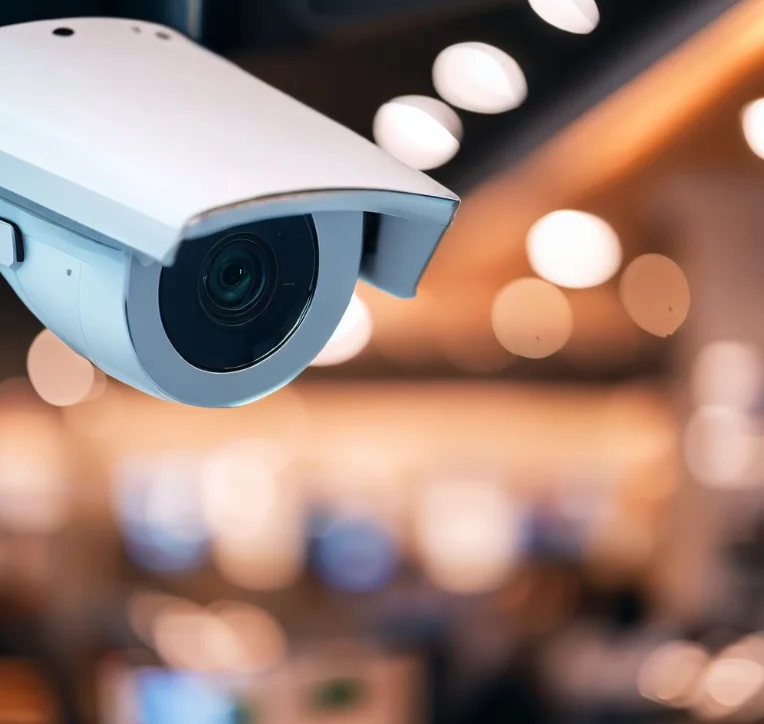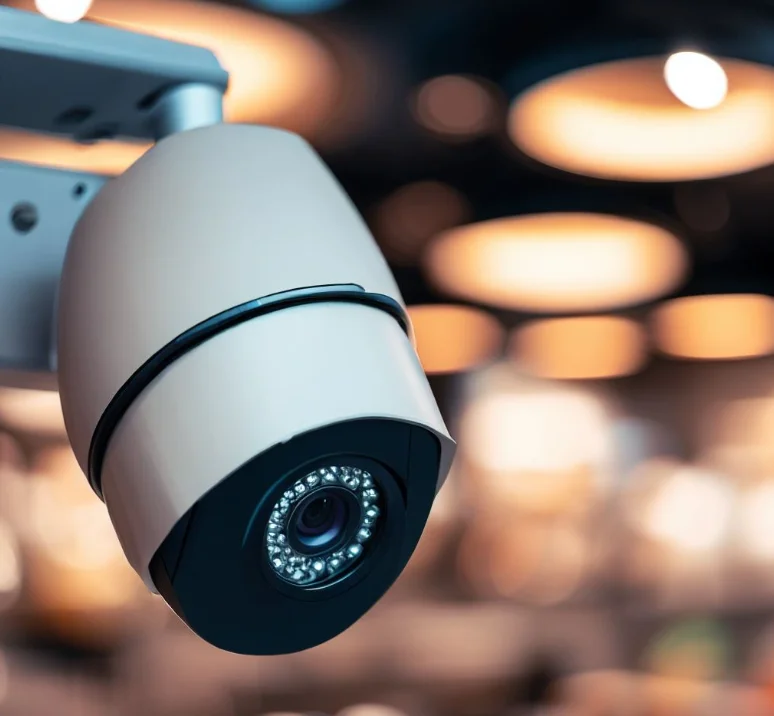Retail stores face immense challenges in protecting merchandise, assets, and people. Shoplifting, burglary, vandalism, and employee theft plague store owners, costing retailers nearly $50 billion annually. Security cameras provide an effective solution to combat these threats. However, choosing the right cameras and system requires careful planning tailored to your specific retail environment and needs.
Determining Camera Types and Features
A primary decision is selecting camera styles suitable for a retail setting. Dome and bullet cameras discretely monitor indoor areas like aisles, dressing rooms, and point-of-sale systems. Bullet cameras easily mount to ceilings and walls using swivel brackets that enable adjusting the field of view. Meanwhile, compact dome cameras offer vandal-resistance and Night Vision capabilities well-suited for indoor low light conditions.

Advanced features like video analytics, remote focus, and pan/tilt/zoom increase system functionality. Video analytics apply algorithms to identify suspicious behaviors like loitering or intrusion detection. Remote focus and PTZ allow adjusting camera views remotely using software. When combined, these features expand the monitoring range and intelligence of cameras.
Selecting Camera Resolution and Frame Rate
Camera resolution directly impacts image quality. For identifying individuals and vehicles, 1080p HD or higher provides sufficient details. Lower resolutions like 480p suit less critical areas like stock rooms.

Ensuring Proper Lighting Conditions
Lighting and image quality correlate directly. Brighter spaces enable clearer footage. Matching camera light sensitivity, lens aperture settings, and supplemental lighting creates optimal conditions. During daylight hours, cameras should capture crisp video with ISO ratings of 100-400. For low light, higher ISO 600-3200 improves visibility but with more noise.
Wide dynamic range (WDR) further enhances video quality in high contrast areas that experience both bright and low light. Supplementing indoor ambient lighting with infrared illuminators, particularly at night, provides additional visibility.
WiFi vs. Wired Camera Connections
Wireless security cameras utilizing WiFi eliminate the need for installing cabling. However, WiFi cameras are limited by router proximity and vulnerable to interference from other wireless signals. Wired Ethernet connections deliver uninterrupted transmission for IP cameras but require installing data cabling.

Determining Video Storage Needs
High-definition camera footage requires ample recording and retention capacity. On-site network video recorders (NVR) leverage high-capacity hard drives for local recording and storage. However, their storage is finite, requiring constantly managing drive space.
Cloud-based options provide virtually unlimited off-site capacity for longer video retention. Cloud storage also enables convenient remote access to live and recorded video. For data protection, end-to-end encryption prevents unauthorized access to cloud video. While cloud services involve monthly fees, expanding capacity is straightforward without hardware constraints of NVRs.
Selecting Strategic Camera Locations
Camera placement requires carefully surveying a retail space. Entrances, checkout counters, and valuables like jewelry require dedicated cameras. Ideally, cameras have overlapping views to avoid blind spots. Capturing facial, vehicle, and other identifiable details determines mounting heights and direction.
Outdoor placements should cover approaches to entrances, loading zones, and parking areas. Avoiding direct sunlight and adding external housing preserves video quality. Proper placement enhances camera effectiveness and maximizes coverage across all vulnerable areas.
Installation and Post-Implementation Considerations
Professional installation ensures properly securing cameras, configuring viewing angles, and adjusting settings to maximize image quality. Subsequent testing validates functionality for live viewing and recording quality. Staff training helps employees understand the technology, access footage, and follow protocols that maintain video data integrity when managing incidents and investigations.
Post-installation stages should include maintenance tasks like inspecting cabling, clearing dust or dirt from camera domes, and testing motion-activated events. Updates to camera firmware and software maintain optimal performance. Monitoring storage capacity and retention policies prevents critical data from being overwritten. Together, professional installation combined with vigilant post-implementation maintenance keeps retail surveillance systems operating reliably.
The Loss Prevention and Safety Benefits
When implemented competently, retail security cameras deliver measurable loss prevention and safety improvements. Visible cameras deter criminal activity, reducing inventory shrinkage by up to 94%, according to research. Employee theft also declines by 21% or more in retail stores with surveillance versus those without. Cameras further enable remote monitoring of stores when closed, thwarting break-ins and facilitating prompt police response to alarms.
Along with deterrence, cameras help apprehend suspects by providing visual evidence. Features like license plate and facial recognition allow definitive identification. By combining proactive deterrence with post-event investigative capabilities, retail video surveillance delivers a comprehensive layer of protection.
Key Takeaways
When selecting retail security cameras, key considerations include:
- Choosing camera styles and features tailored to your specific retail environment
- Ensuring adequate image resolution and frame rate performance
- Optimizing lighting conditions that maximize video quality
- Evaluating wired vs wireless installation trade-offs
- Determining adequate video storage capacity needs
- Carefully surveying and strategically placing cameras to eliminate blind spots
- Having professional installation and ongoing maintenance support
With the right solution in place, video surveillance fosters measurable loss prevention, safety, and security gains for retail stores. Visible well-placed cameras alone create strong deterrence against criminal activity. When incidents do occur, recorded footage aids identifications and investigations. The flexibility of a robust system accommodates evolving retail needs now and in the future.
